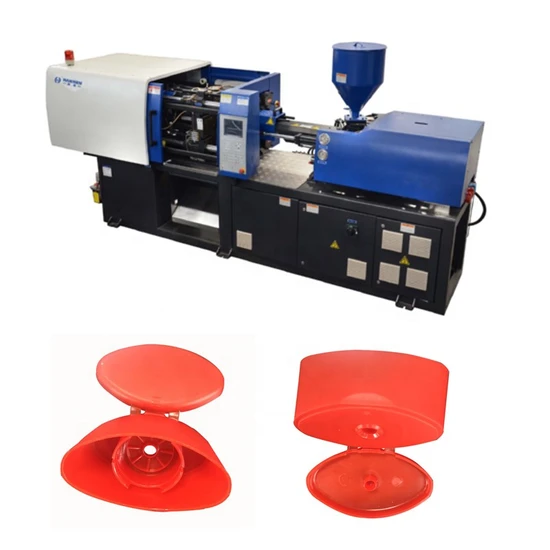
Haichen E Series Standard Servo Plastic Cap Automatic Injection Molding Machine
Basic Info.
Model NO.
HCS280-E
Type
Tube Head Injection
Plastic Type
Thermoplastic
Plasticizing Way
Screw Type
Clamping Way
Hydraulic
Automation
Automatic
Computerized
Computerized
Certification
CE, ISO9001:2008
Selling Units
Single Item
Single Gross Weight
50.000kg
Injection Rate (G/S)
265 G/S
After-Sales Service Provided
Online Support
Weight (Kg)
6500 Kg
Max Mold Height
520
Theoretical Shot Volume(Cm3)
481cm3
Ejector Force(kN)
50kN
Ejector Stroke(mm)
140mm
Video Outgoing-Inspection
Provided
Product Name
Plastic Injection Moulding Machine
Plastic Processed
PP,PE/PP
Style
Horizontal
Model Number
Hcs280-E
Application
Inserting Plastic Products
Transport Package
Wodden
Specification
HCS280-E
Trademark
Haichen
Origin
Ningbo
HS Code
8477101090
Product Description
Haichen E series standard servo plastic cap automatic injection molding machineProduct description
We are prefessional production base specialized in designing and manufacturing plastic injection machines and enjoy high reputation in the Plastic machinery industry.
| | size(mm) | 45*45*25 |
| weight(g) | 16 | |
| cavities | 8 | |
| tonnages of machine | 170T | |
| mould | customized | |
| material | pp | |
| color | blue |
Detailed Images
1. Simple structure in linear type, easy in installation and maintenance.
2.Adopting advanced world famous brand components in pneumatic parts, electric parts and operation parts.
3. Running in a high automatization and intellectualization, no pollution.
The process of manufacturing plastic caps involves transforming plastic pellets into functional closures through injection molding.
This method uses high pressure to inject molten plastic into a precision mold, which then cools and solidifies into the desired cap shape.
Steps include designing the mold, selecting the appropriate material, injecting the molten plastic, cooling, and finally packaging the finished cap.
Here is an overview of how plastic caps are made, from raw materials to finished products.
The process of making plastic caps Design and mold preparation for plastic caps First, designers create a detailed blueprint of the cap, considering factors such as size, compatibility with the container, and user convenience.
This design then guides the creation of a mold-a tool that shapes the plastic. Molds are typically made of durable materials such as steel or aluminum to withstand the rigors of high-volume production.
Material selection and preparation Manufacturers select the appropriate plastic material, typically polypropylene (PP), because it is durable and chemically resistant. The plastic arrives in pellet form and is carefully dried to remove any moisture that could affect the integrity of the cap during the molding process.
Injection Molding Process of plastic caps The heart of manufacturing is the injection molding process. Here, dry plastic pellets are fed into the cap making machine, melted, and then injected into a mold under high pressure. The plastic fills the mold and forms the shape of the bottle cap.
Cooling and Ejection Once the plastic is injected, the mold cools, allowing the plastic to solidify into the shape of the bottle cap. After solidification, the mold opens and the bottle cap is ejected. This step is critical to ensure the structural integrity of the bottle cap.
Post-molding operations After ejection, any excess material or "burrs" are trimmed off. Some bottle caps may also undergo additional processing, such as heat treatment or the application of a liner to obtain a better seal.
Company Information
>> Dialead Power Tool Weka Hilti Tyrolit Drill Machine Reinforced Concrete Masonry Arix Diamond Hole Saw Core Drill Bit Segment
>> Transmission for Jmc Isuzu Nkr Nhr 4jb1 2.8L Msb-5m/5s
>> New Design Classic Makeup Bag Houndstooth Pattern Cosmetic Bag with PU Cover for Lady and Girls Fashion Tote Travel Storage Bag
>> Natural bamboo wood sandwich ziplock reusable home food storage bags rack organizer with lid eco friendly 12 kitchen & tabletop
>> High quality print on demand wholesale reflective 3D logo OEM custom iron on heat transfer logo for Hoodies
>> Manufacturer Cat Toy Scratcher Sisal Cat Scratching Post Pet Scratching Post
>> Factory Outlet Latest Single Sink Bathroom Cabinet with Sink for MDF Standard
>> Programmable Touch Universal Control Environmental Simulation Constant Temperature Humidity Climatic Dry Test Chamber
>> Anti cat scratch Stainless Steel Wire Mesh Window Screening
>> Lithium Electric Saw Blades for Woodworking
>> 220V Mini Electric Wire Rope Hoist Small Hoist
>> Competitive Mini Tiller 7HP 8HP 9HP Diesel Engine with 24 Blades 32 Blades Made in China
>> Good Price 0.6 mm Pure Nickel Wire
>> Brass Connecting LPG Gas Cylinder Brass Gas Regulator Valve
>> Ocean boat fishing ultralight carp telescopic fishing rod
>> Stone Granite Marble Edge Cutting CNC Machine
>> Fitness Gym Equipment Machine Commercial spinning Bike spinning Bike
>> Manufacturers Wholesale Vertical Tapping Machine
>> Factory Price 27 Inch Advertising Golf Umbrella for Sale
>> Jt1720/Jt20/Jt4020 HDD Drill Pipe for Directional Drilling
>> New Luxury Full Set Adjustable Dental Chair with Movable Top Light
>> 7 in 1 Multifunction lipo laser cavitation ultrasonic machine 5 in 1 vacuum rf slimming
>> Multistation Automation Rotary Table Ultrasonic Plastic Welding Machine
>> Xiaomi 700kids transformable children's tricycle, sliding balance bike, children's bike
>> HDPE Ice Pack Filled with Phase Change Material T at -16, - 21, -25 Degree Celsius Keep Cold Retention High Performance
>> Minimally Invasive Surgery Endoscopic Laparoscopic Instrument Visible Optical Bladeless Disposable Trocar for Arthroscopy Surgical Puncture Medical Device
>> Bamboo Wooden Salt And Pepper Mill Set Ceramic Grinder Blades With Adjustable Coarseness For Cooking
>> Metal Door for Flat Pack Container Office on Sale (CHAM-MDA600)
>> New Wireless Controle PS5 for Sony Playstation 5 Game Controller PS5 Joystick Gamepad Joypad for PS5 Controller
>> 2 Axle Double Deck Auto Car Carrier Truck Trailer Transport Trailers for African Car Trailer